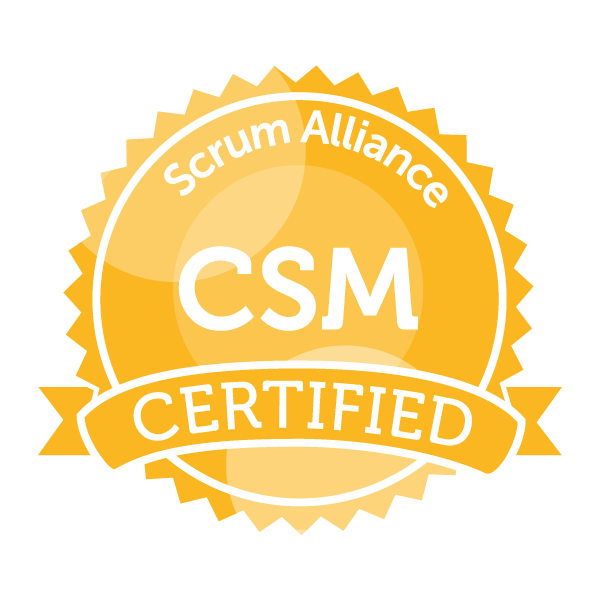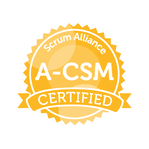Unleashing the Power of Collaboration: How to Safeguard Your Scrum Team from Outside Distractions8/23/2023
Tamara Runyon In today's fast-paced business environment, collaboration is key to success. It enables teams to work together efficiently, leverage diverse expertise, and deliver value to customers. When everyone collaborates effectively, the entire team can align their efforts to deliver value to end-users. However, external distractions often prevent teams from reaching their full potential. Collaboration lies at the heart of the Scrum framework and Scrum and Agile teams rely on effective collaboration to deliver high-quality products. In Scrum, collaboration is not limited to team members; it extends to stakeholders, product owners, and scrum masters as well. By implementing strategies to minimize distractions, scrum masters can support teams so they can focus on their work and improve productivity. In this post, we will take a look at common distractions that sabotage collaboration and explore techniques to mitigate these distractions, including:
Understanding the importance of collaboration in Scrum To understand the importance of collaboration in Scrum, we need to look at the core principles of Scrum. Scrum emphasizes transparency, inspection, and adaptation. These principles can only be fully realized through effective collaboration. By working together, team members can share knowledge, identify and address issues, and adapt their approach to deliver high-quality products. Collaboration in Scrum is not just about completing tasks; it's about fostering a culture of trust and respect. When team members collaborate, they build strong relationships, which leads to better communication, increased motivation, and improved problem-solving abilities. Ultimately, collaboration in Scrum enables teams to deliver products that meet customer expectations and drive business success. Common distractions faced by Scrum teams Despite the benefits of collaboration, Scrum teams often face external distractions that hinder their ability to work effectively. These distractions can manifest in various forms, such as:
The impact of outside distractions on team productivity External distractions can have a significant impact on team productivity and overall project success. When team members are constantly interrupted or diverted from their work, it disrupts their focus and decreases their ability to deliver high-quality output. Distractions not only affect individual team members but also disrupt the collaborative dynamics within the team. When team members are constantly pulled away from their tasks, it hinders their ability to contribute to discussions, share ideas, and collaborate effectively. This can result in missed opportunities, miscommunication, and a decrease in overall team performance. Moreover, distractions can lead to increased stress levels among team members. When individuals are constantly bombarded with interruptions, they may feel overwhelmed, frustrated, and unable to concentrate on their work. This can negatively impact their motivation, job satisfaction, and overall well-being. As a scrum master, it is crucial that you safeguard your Scrum team from outside distractions. It is essential to implement strategies that promote a focused and collaborative work environment. Strategies for safeguarding your Scrum team from distractions As scrum master you can safeguard your team by acting as a shield to deal with unnecessary meetings, guiding your team to reduce delays by discussing communication strategies up front, and coaching your team on the purpose of each of the sprint events. Act as a shield for your team Expect to act as shield for the team to reduce interruptions. Regular status meeting with stakeholder? Find out if you can attend on the team's behalf. Negotiate with management on reducing the number regular status meetings by offering the sprint review meeting as a method for them to stay up to date on progress. Other unplanned meeting called? Take the lead in discussing the cost or impact of interrupting the team's sprint. Be willing to negotiate other alternatives to meet the needs of whoever called for the unplanned meeting. Discuss communication strategies upfront Communication strategies should be discussed as part of the team's working agreements. Clear and effective communication is the foundation of collaboration in Scrum. By establishing clear and effective communication channels, teams can minimize unnecessary interruptions and ensure that information flows smoothly. Have the team establish guidelines for when and how team members should communicate. This could include designated communication tools, preferred modes of communication (e.g., email, chat, or face-to-face), and expected response times. Promote the Daily Scrum as a regular check-in practice This dedicated time is for team members to share updates, ask questions, and discuss any challenges they are facing. Having this time helps minimize ad-hoc interruptions and provides a structured platform for collaboration. Be careful, however, that the daily scrum stays within the time box of 15 minutes each day. Longer problem-solving discussions should be called by team members outside of the daily scrum, and only when necessary. Practicing discipline, setting boundaries, and managing expectations To safeguard your Scrum team from distractions, it is essential for the team to practice discipline, set boundaries, and manage expectations. Without the discipline to focus on the work of the sprint, and only the work of the sprint, it is impossible for the team to effectively learn how much work they can accomplish in one sprint. Without that consistency, there is no visibility into what is likely to be accomplished, and no way to set and manage expectations with stakeholders. Leverage the sprint as a boundary marker Encourage the team to be realistic about what they can accomplish, all the way to done, within the sprint. Unrealistic expectations can lead to unnecessary stress, force team members to rush their work, increasing the likelihood of errors; and over time, ignoring the sprint boundaries altogether. This decreases transparency and hinders the team’s ability to meet goals. Use the Sprint Goal as a guide for evaluating unexpected work All unexpected work, and it happens, needs to be evaluated by the product owner and the team based on the criticality and urgency of the work. If unexpected work is discovered or brought to the team's attention, have the team ask the question – does this work need to be completed during the current sprint in order to meet our sprint goal? If the answer is yes, then the team needs to self-organize what can get done and who will do it. If the answer is no, the work should be postponed (in the case of postponement, the product owner may choose to add the work to the product backlog). If unexpected work is a common occurrence, the team should set aside buffer time during the sprint to deal with emergency items that the product owner agrees cannot wait until the next sprint. During sprint planning, coach the team to estimate, based on their experience, how much time they expect spend on this kind of critical unexpected work. As scrum master, you can help your team by tracking the ratio of planned to unplanned work each sprint. This metric can help the team understand how well they are planning during their sprint planning event, and/or how interruptions are impacting the value the team can deliver. When evaluating this metric, ask yourself questions such as: How much of the unplanned work was from external interruptions? Can the team say no to this unplanned work? Do you need to bring this up with management as an impediment to be resolved? Use the Sprint Retrospective to learn from past performance How well did we meet our goals this sprint? What can we do better? Help provide visibility by tracking the ratio of planned to actual product backlog items (PBIs) delivered each sprint. How many PBI's were planned in sprint planning? How many PBI's were delivered in the sprint? Over time, that ratio should converge to 1:1 for the majority of the sprints. How well did we estimate the buffer time for our sprint? Should we increase it, decrease it? These are questions that the team should be asking in the early sprint retrospectives as they learn together how to best estimate the amount of work to commit to during the sprint. Manage stakeholder expectations Work with the product owner to communicate openly with stakeholders about product goals and strategies, forecasted timelines for deliverables based on priorities and actual work accomplished. Managing stakeholder expectations can help minimize last-minute requests or changes that can distract the team. Protect the team from interruptions by stakeholders. All requests external to the team need to be dealt with by you, as scrum master, and/or by the product owner to shield the team from unnecessary interruptions. Encouraging effective time management Effective time management is crucial for maximizing productivity and minimizing distractions. Here are some time management techniques that can help your Scrum team stay focused. Break tasks into manageable chunks Breaking tasks into smaller, more manageable chunks reduces risk, and can make the tasks less overwhelming and easier to focus on. By breaking the work down into small-to-medium product backlog items before committing to them in a sprint planning event, it enables the team to continue to deliver value in the sprint, even if one or two items are unexpectedly blocked. Contrast that with the team committing to one or two larger, less-defined backlog items in a sprint. If there is an impediment on one of these items, the entire product backlog item is blocked, and the team can only deliver a small fraction of the planned value. Keep work visible Work with your team to choose and implement techniques to help team members know how much work is remaining in the sprint. These techniques could be physical (such as a Scrum or Kanban board) or virtual (perhaps your team already uses a software tool that has features which will work toward this end). The most important thing is that the techniques chosen work well for the team members using them. Increasing the visibility of work remaining can provide valuable insights into productivity patterns and identify areas for improvement. Conclusion Safeguarding your Scrum team from outside distractions is crucial to unleash the power of collaboration and optimize team productivity. A distraction-free work environment can be created by establishing clear communication channels, setting boundaries, and implementing time management techniques. This will foster collaboration and provide the environment your Scrum team needs to excel. Remember, collaboration is not just a buzzword; it's a fundamental aspect of Scrum that can unlock the full potential of your team and deliver outstanding results. Comments are closed.
|
|
MAILING ADDRESS : APMI1630 A 30th Street #510 Boulder, CO 80301-1014
[email protected] | 425.985.4344 |
|
© COPYRIGHT 2022, ADVANCED PROJECT MANAGEMENT, INC. ALL RIGHTS RESERVED.

 RSS Feed
RSS Feed




